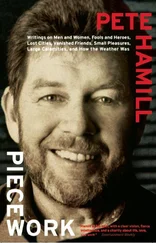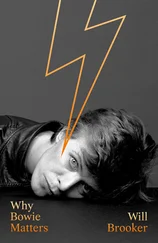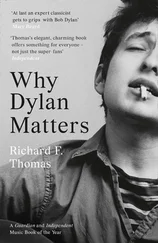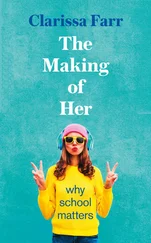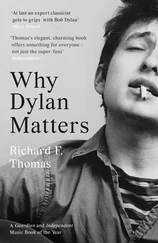Sinatra remembered finally asking Dorsey to have dinner with him and another musician; Dorsey agreed and was touchingly grateful. “After that,” Sinatra said, “he was almost like a father to me.” Dorsey would, in fact, be godfather to Sinatra’s daughter Nancy. During these three years Sinatra absorbed many lessons from his surrogate father. One was about spacing a show, always meticulously planned by Dorsey. The Dorsey band wasn’t just playing music for dancers, it was also presenting a show, one that demanded its own structure, intelligent variations of up-tempo tunes and ballads, a sustained presentation that would leave the audience with a sense of completion.
Sinatra told me about Dorsey: “He put together a show like it was one long piece of music, or like an album — this was before the LP, and you couldn’t do records that way — with different moods and movements leading to a crescendo. He knew how to shift a mood so it didn’t all sound the same and bore the ass off the audience. It was dance music, first and foremost. But it was more than that. I always kept that in mind later, for my own shows and albums. Tommy didn’t spell it out to us, but he didn’t have to. It became part of you, just from doing it. Seven shows a day, sometimes, if you worked a theater. Three shows a night, if the gig was a dance somewhere. It became part of you.”
Dorsey’s own work on the trombone had a lasting influence on Sinatra’s style. There has been much discussion of the way Sinatra watched Dorsey’s tricks of breathing, in order to sustain long phrases. The writer and lyricist Gene Lees dismisses most of that as a myth. But in his essay on Sinatra in Singers and the Song II, Lees describes superbly what Dorsey’s real influence was on Sinatra the musician. He writes of Dorsey:
“He did … have remarkable breath control, and his slow deliberate release of air to support long lyrical melodic lines was indeed instructive to Sinatra and still worth any singer’s attention. Dorsey would use this control to tie the end of one phrase into the start of the next. Sinatra learned to do the same.”
Lees cites, as an example, their 1941 recording of “Without a Song.”
“Since Dorsey’s trombone solo precedes the vocal, the record provides an opportunity to observe how Sinatra was learning from Dorsey, and how far he had come from ‘All or Nothing at All.’ At the end of the bridge, Sinatra goes up to a mezzo-forte high note to crest the phrase ‘as long as a song is strung in my SOUL!’ But he does not breathe then, as most singers would. He drops easily to a soft ‘I’ll never know …’ This linking of phrases between the inner units, learned from Dorsey, gave Sinatra’s work a kind of seamlessness.”
To build up his breath, Sinatra spent long hours in swimming pools, often under water, and when not on the road used the outdoor track at a school in Jersey City. Dorsey’s long lines, his legato sound, his use of glissando movements, abruptly plunging deep into the lower register for certain effects — all marked Sinatra. But Sinatra could do things Dorsey could not do, for the simple reason that he was using the English language, with its creamy vowels and abrupt consonants. And he used it in a way that can only be described as urban. Again, Lees describes this very well:
“When you sing a long note, it is the vowel you sustain, almost always. Certain of the consonants, voiced or voiceless, cannot be sustained: b and its voiceless counterpart p, d and t, g and k . You cannot sing thattttt. It is impossible. You must sing thaaaaat or cuuuuup. Or taaaake. But certain other consonants, voiced and unvoiced — v and f, z and s — can be sustained, being fricatives, although I find the effect unattractive. You cannot sustain the semivowels w and y . But there are four semivowels that can be sustained: m, n, l, and r . Now, just as Spanish has long and short forms of the letter r — a double rr, as in perro , is rolled — correct Italian enunciation requires that you slightly sustain all double consonants. And Sinatra always recognized this principle, whether because of his Italian background or not. You hear it when he extends the l in Alllll or Nothing at Alllll .”
In addition, Sinatra’s delivery of certain words acquired a subtle New York flavor, Lees points out, because he “dentalized” ts and ds . That is, like many people from the New York area, he formed each consonant with the tongue against the teeth, rather than the gum above the teeth. In words like dream or tree, he could instantly pull it away, softening the following r . This made for a more fluid enunciation of many words and prevented the popping of consonants when using the microphone. This was never a problem for opera singers, or Broadway belters, but was essential when using a microphone in a recording studio, or the even clumsier microphones used on bandstands.
During this period Sinatra worked hard at mastering the microphone, knowing that it was his musical instrument. There were no portable mikes in those days; each microphone was attached to a stand. Almost all singers stood rigidly facing the mike and used their hands for dramatic emphasis. It was as if they were singing to the microphone, not the audience. Sinatra changed that, gripping the stand itself, and then, according to Lees, “moving the mike in accordance with what he was singing. And he was the man who developed this technique.” Movement was crucial to the performance. “Sinatra gripped the stand and drew the microphone toward him or tilted it away according to the force of the note he was putting out at any moment.”
Sinatra was then able to establish greater intimacy with the audience, shifting his attention from one young fan to another, but making each feel like the specific object of his attention. He never lost that ability to connect. It was at the heart of his intimate style. These factors combined to make the unique Sinatra sound: breath control and seamlessly sustaining notes; the subtlety of the New York speaking voice refined by impeccable diction; a natural, intimate style made possible by intelligent use of the microphone. Dorsey also established for Sinatra a standard of professional excellence that would endure for a lifetime.
Nobody can speak with absolute confidence about the artistic undertones of the Sinatra style. He spoke later in life about the effect of Billie Holiday on his work, citing her phrasing. I’ve listened to a number of tunes that were recorded by both, and I don’t hear that effect. But one night he said something about Lady Day that did make sense.
“What she did was take a song and make it hers,” Sinatra said. “She lived inside the song. It didn’t matter who wrote the words or the music. She made it hers. All the jerks who fucked her and left her. All the nights strung out on junk. All the crackers that treated her like a nigger. They were all in her music. That’s what she made out of those songs. She made them her story.”
At his best (and he sometimes made choices that were awful, or had them forced upon him) Sinatra did the same. He inhabited a song the way a great actor inhabits a role, often bringing his own life to the music. As a young singer, there wasn’t as much life to draw upon, but it did have a large share of hurts, some because he was Italian American, some because he felt he didn’t have enough formal education, others because of the way he grew up as an only child. Right from the beginning, he had a profound understanding of human loneliness. Some of this he must have also drawn from the silent presence of his father, the inconstant exuberance of his mother. Some of it must have been emphasized when he joined the company of the orchestras, living day and night with talented men who had lived other kinds of lives, rich with the presence of family.
Читать дальше



